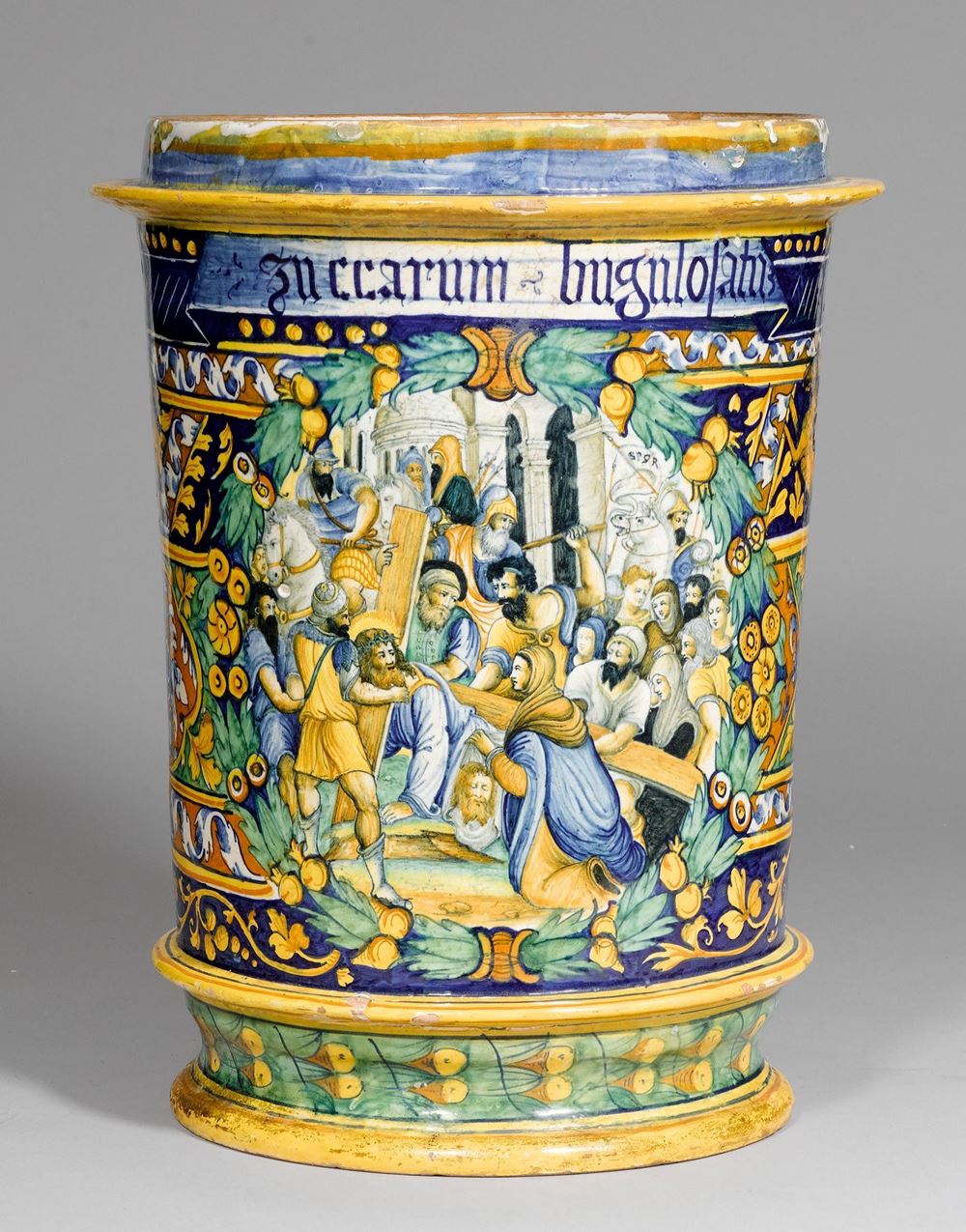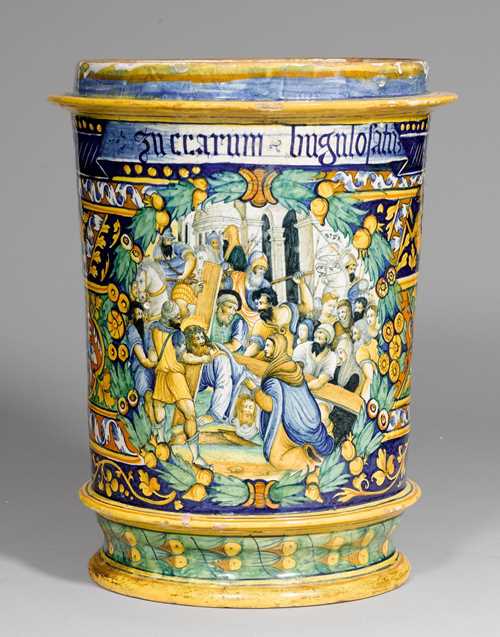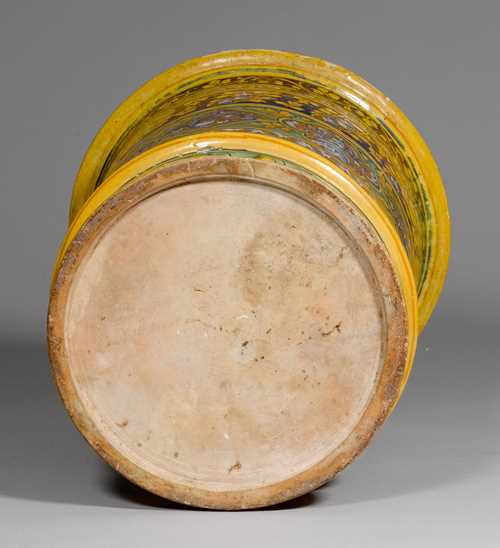
Lotto 1729* - A170 Argenteria e porcellana - lunedì, 15. settembre 2014, 14h00
IMPORTANT, LARGE 'MAJOLICA' PORCELAIN 'ISTORIATO' ALBARELLO , 'A QUARTIERI', Faenza, ca. 1540-1550. Cylindrical, slightly conical vessel with circumferential profiled rings on the top and on the bottom. The front with a scene from the Stations of the Cross, depicting Christ on his way to Golgotha. at the moment he stumbles and Saint Veronica hands him the sudarium (sweat-cloth) which already shows the features of Christ. The scene takes place in a crowd of Roman soldiers, with an antique cityscape in the background. Framed by a green laurel wreath with yellow fruit, on a background of tendril borders with grotesque figures in blue, yellow and green in the 'Quartieri' style. The top of the scene is adorned by an inscription accentuated in blue: 'ZUCCARUM BUGULOSATUM'. Remains of old provenance labels 'Collection Scalea'. H 48.5 cm, D 32 cm. Small repairs and some chipping of the glaze. Provenance: - Collezione dei Principi Lanza di Scalea, Palermo. - Private collection, Rome. 'Zuccarum buglosatum' means 'candied ox tongue' (Rudolf E.A. Drey, Apothecary Jars, 1978, page 238). This scene goes back to a series of woodcuts with depictions of the 'Passion of Christ' by Girolamo de Grandi from 1538, a copy of which must have been available to the artist in the majolica workshop, such as the one from the British Museum (see image). (Our special thanks goes to Dr. Stefanie Meier-Kreiskott for pointing out this example to us.) Both of these Albarelli are exceptional pieces of art and are part of a group of important large Albarelli 'istoriati' in the Faenza 'a quartieri' style. This type of decoration is typical for the Faenza workshops, and can be substantiated by two apothecary jars in the Louvre in Paris, signed 'FATE IN FAENZA' . (C. Ravanelli Guidotti, Thesaurus di opere della tradizione di Faenza, Faenza 1998, page 391). A comparable Albarello from this series, from Faenza, by Baldassare Manara, with a depiction of the Holy Family, formerly from the collection of M.P. Botkin in Petrograd, is presently in the Hermitage Museum in Saint Petersburg (Inv.No. F 2133). (Ivanova E., Il secolo d'oro della maiolica. Ceramica italiana dei secoli XV-XVI dalla raccolta del Museo Statale dell' Ermitage, 2003, page 42 No.10). For further majolica porcelain attributed to Baldassare Manara, see Ravanelli Guidotti, Baldassare Manara faentino, pittore di maioliche nel Cinquecento, Ferrara, 1996, page 194. In 1999, Giuliana Gardelli attributed a group of majolica porcelain with a similar decoration to the workshops of Guido da Merlino and Guido Durantino from Urbino. (Italika, Maiolica Italiana del Rinascimento, 1999, pages 258-260, No. 111). CHF 90 000.- / 120 000.- € 75 000.- / 100 000.-
CHF 60 000 / 80 000 | (€ 61 860 / 82 470)
Venduto per CHF 75 000 (incl. premio dell'acquirente)
Non si assume alcuna responsabilità per la correttezza di queste informazioni.








